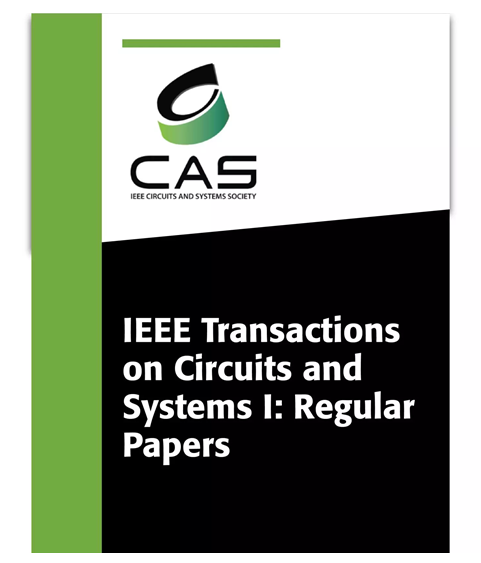基于忆阻器仿真器的交叉棒阵列目标检测与识别
IF 5.2
1区 工程技术
Q1 ENGINEERING, ELECTRICAL & ELECTRONIC
IEEE Transactions on Circuits and Systems I: Regular Papers
Pub Date : 2025-04-03
DOI:10.1109/TCSI.2025.3553058
引用次数: 0
摘要
物体检测和识别对于自动驾驶汽车、监控系统和人机交互至关重要。我们提出了一种新的基于全互补金属氧化物半导体(CMOS)电路的系统,用于使用尖峰神经网络(SNN)进行目标检测和识别。我们的整体CMOS电路集成了神经形态元件,包括泄漏集成和发射(LIF)神经元模型,峰值时间依赖性可塑性(STDP)忆阻器突触,以及基本的模拟和数字构建模块。学习机制表现为一种完全不同的方法,该方法基于一组异或门,以256 \ × 6$大小的横杆数组识别六个不同的对象。这是首个此类识别机制。我们还使用使用灰度转换的$64 \ × 4$大小数组执行手写数字识别。通过过程角点仿真、噪声分析和温度分析验证了系统的鲁棒性。我们还用混淆矩阵图展示了我们设计的数字识别任务的准确性,准确率达到82.5%。我们采用基于CMOS记忆电阻模拟器STDP交叉点阵列的架构实现了每个神经元块的最小能量消耗,每个神经元块的能量消耗约为$ 2.59$ pJ,考虑到目标识别任务,整个系统的总能量预算为663.66 pJ。本文章由计算机程序翻译,如有差异,请以英文原文为准。
Memristor-Emulator-Based Crossbar Array for Object Detection and Recognition
Object detection and recognition are crucial for autonomous vehicles, surveillance systems, and human-computer interaction. We present a new fully complementary metal-oxide semiconductor (CMOS) circuit-based system for object detection and recognition using a Spiking Neural Network (SNN). Our holistic CMOS circuit integrates neuromorphic elements, including a leaky integrate-and-fire (LIF) neuron model, spike time-dependent plasticity (STDP) memristor synapse, and basic analog and digital building blocks. The learning mechanism is manifested by a completely different approach based on an array of XOR gates to recognize six different objects with $256 \times 6$ size crossbar arrays. This is the first-ever recognition mechanism of its kind. We also perform handwritten digit recognition using a $64 \times 4$ size array using grayscale conversion. The proposed system’s robustness is validated through process corner simulations, noise analysis, and temperature analysis. We also show the accuracy of our design for the digit recognition task using a confusion matrix plot, and the accuracy turns out to be 82.5 %. Our pioneering approach using a CMOS memristor-emulator STDP crosspoint array-based architecture achieves minimal energy consumption per neuron block, which amounts to $\approx ~2.59$ pJ per neuron block and an overall energy budget of 663.66 pJ for the entire system considering the object recognition task.
求助全文
通过发布文献求助,成功后即可免费获取论文全文。
去求助
来源期刊
CiteScore
9.80
自引率
11.80%
发文量
441
审稿时长
2 months
期刊介绍:
TCAS I publishes regular papers in the field specified by the theory, analysis, design, and practical implementations of circuits, and the application of circuit techniques to systems and to signal processing. Included is the whole spectrum from basic scientific theory to industrial applications. The field of interest covered includes: - Circuits: Analog, Digital and Mixed Signal Circuits and Systems - Nonlinear Circuits and Systems, Integrated Sensors, MEMS and Systems on Chip, Nanoscale Circuits and Systems, Optoelectronic - Circuits and Systems, Power Electronics and Systems - Software for Analog-and-Logic Circuits and Systems - Control aspects of Circuits and Systems.

 求助内容:
求助内容: 应助结果提醒方式:
应助结果提醒方式:


